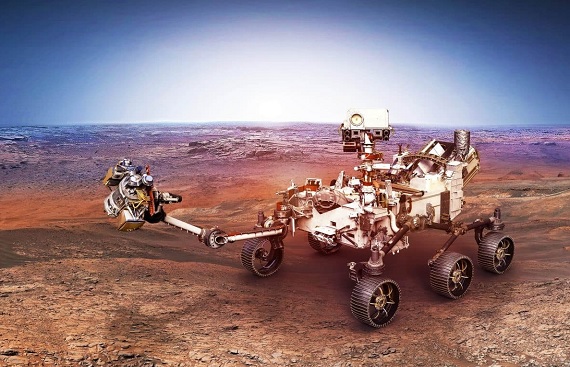NASA's Perseverance Rover Uses AI to Make Real-Time Decisions on Mars
By
siliconindia | Wednesday, 17 July 2024, 12:44:55 PM IST

The NASA Perseverance Mars Rover Mission has struck gold: it has deployed artificial intelligence on the Red Planet to enable real-time analysis of rock composition this is the world's first use of technology in deep space exploration.
Presently, NASA mission officials have now confirmed that the AI has been running on the Rover since almost three years ago, detecting minerals all by itself inside Martian rocks. But this is the first time that AI has been used on Mars to make instant decisions about rock composition.
Major steps towards the development of 'smart' spacecraft that can certainly, on its own, decide how, where, and from which locations data needs to be collected, and even how that data should be analyzed. The scientists are one step closer to their goal of completely understanding the Martian terrain.
The Perseverance Rover uses AI with its PIXL (Planetary Instrument for X-ray Lithochemistry) instrument to self-determine the best times for drilling rock cores, storing them for future return to Earth the key and grand goal of NASA's bold Mars Sample Return campaign.
Abigail Allwood, principal investigator for PIXL at NASA's Jet Propulsion Laboratory in Southern California, said that AI was at the very core of the PIXL functions. The AI chooses areas on rocks that may be scientifically of interest to PIXL, fast-tracking the process for reading the chemical makeup.
The AI is being used in both Perseverance and its predecessor Curiosity, 2,300 miles apart from each other on Mars, for various independent tasks. With AI, however, being used specifically in navigation and adaptive sampling for the Perseverance mission, it becomes ultra-efficient because the scientists' workload reduces with scientific exploration happening at an accelerated pace.
Additionally, it includes a hexapod mechanism with six robotic legs that fine-tune positioning, compensating for the temperature-induced expansions or contractions of the rover's arm. That will ensure placing PIXL's spectrometer very precisely without physically making contact with Martian surfaces.
The PIXL itself uses AI to create finely detailed surface scans of rocks, mapping out the chemical composition with thousands of X-ray beams. This type of complex analysis can help in identifying minerals like carbonates and phosphates, very useful in understanding the geological history of Mars and its potential for past microbial life.
With the rapid growth of AI and Machine Learning, PIXL is bound to extend further in capability and be capable of deeper scientific investigations on Mars. Since astrobiological exploration will be prominent in future deep space missions, it also envisions an integral place for AI-driven autonomy.
How AI Works in NASA's Perseverance Rover: The successful deployment by NASA's Perseverance Rover is characteristic of the commitment to continue pushing these frontiers of spacecraft exploration with new technologies that presage the transformative discoveries across Mars and beyond.

.jpg)

